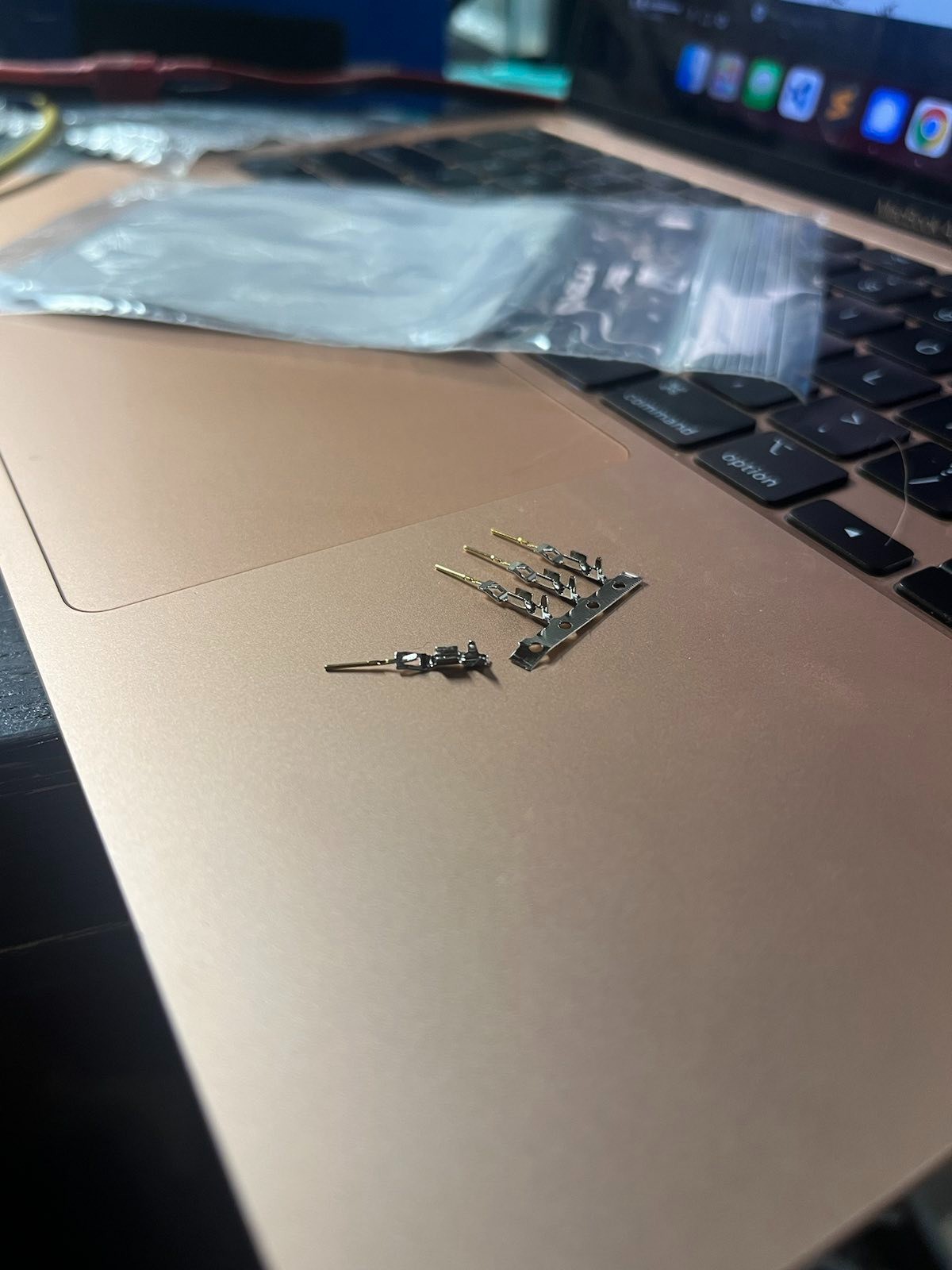In order to communicate with the acoustic bottle at depth, my communication method needed to be able to communicate over long distance. RS-232 tops out at ~50feet/15meters and serial wasn't probably the right choice here longterm. Blue robotics sells a tether interface that runs over Homeplug-AV (IEEE-1901) which is good for 300meters, but the Sparkfun Single Pair Ethernet kit seemed really cool and the fact the ADIN1110 chip used in the product is spec'd to consume 50mW at full 10mbps was a huge bonus for a potentially battery powered setup.
Eventually I would like to try and connect two bottles underwater at the full spec of 1700m of the SPE pair but for now, connecting the bottom payload to the surface bouy with 100m of cable was plenty.
The 1 foot cable that came with the kit was great for testing, but first thing i did was order the parts I need to make my own cable.
Mouser:
Plug: 617-09451812810XL
Crimp: 617-09455002810



Quick and dirty for now, but I wanted to make sure it worked for now! Eventually I plan to pot the cable in a Cobalt connector from Blue Trail Engineering since those are my favorite low cost waterproof connectors (600meter under!)
For some reason in my head i was worried if the if you had to do tx->rx cross like UARTs but turns out the wiring can be reversed and it still works!
With my cable now tested, I can move on to writing a proof of concept driver.
Eventually I would like to run PPP serial link over the connection but for now, i will settle with getting short messages across.
My arduino code's goal would be:
Sample the USB serial UART and buffer any bytes present
Pack a frame and send over the SPE connection if a byte is present in the circular buffer
Ive posted my code here.
And success! Hello world!\n was successfully sent!
Now, the acoustic monitoring payload can send strings over the tether up to the surface about what it is hearing. Hopefully, i can use the full speed of the ADS1110 eventually to transfer raw audio up too!
 Julian Blanco
Julian Blanco
Discussions
Become a Hackaday.io Member
Create an account to leave a comment. Already have an account? Log In.